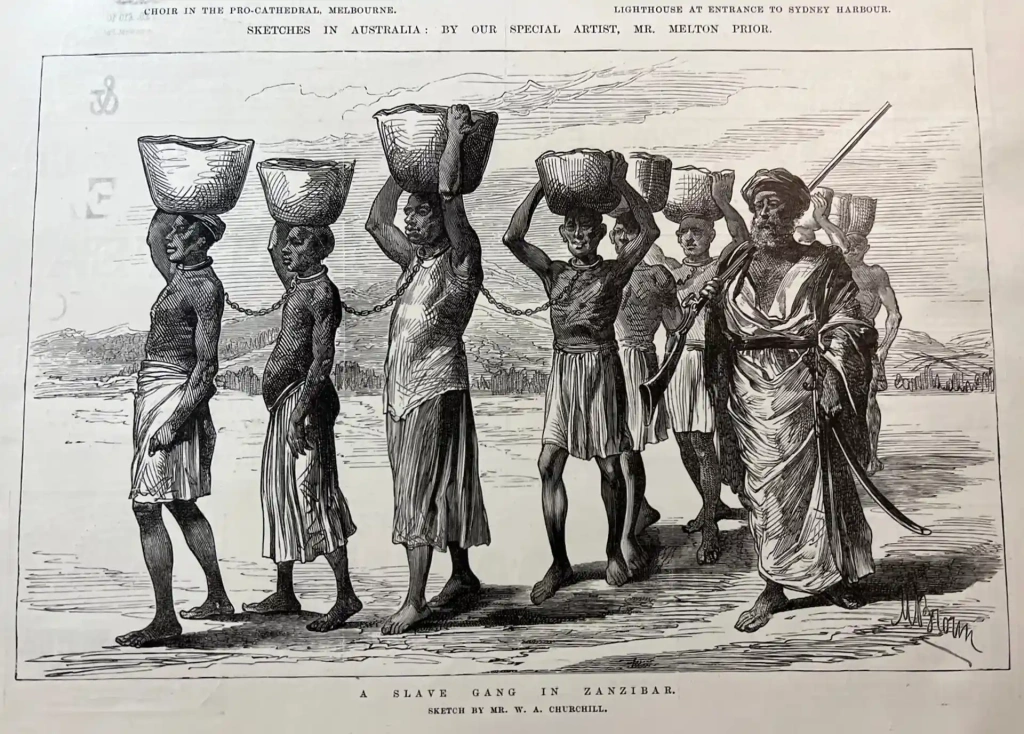Standing on the shores of Zanzibar, one might never imagine the dark tales hidden beneath the idyllic beauty. Over 50,000 slaves passed through these now serene island ports every year during the height of the East African slave trade. This haunting history is a potent reminder of humanity’s capacity for both inhumanity and resilience.
Slave trade tours in Zanzibar illuminate the horrors of this era through preserved sites such as the Slave Market and the slave chambers in Stone Town. The Anglican Cathedral, built atop the former market, features a poignant memorial to honor the countless lives lost. These tours not only educate but also inspire a deep reflection on the lessons of this tragic past.
Slave Trade Tours in Zanzibar: A Dark Chapter in History
Visitors to Zanzibar can explore the harsh history of the slave trade through powerful tours. These tours reveal the island’s past role as a hub in the slave trade. At the height of slavery, thousands were sold here annually. The tours take you to sites like the old Slave Market in Stone Town. You can even see the small, cramped chambers where slaves were held.
The experience is both educational and emotional. Guides narrate tales of survival and resistance amidst horrific conditions. Walking through these historical sites, one can almost hear the echoes of the past. It’s a chance to connect deeply with history and reflect on the resilience of the human spirit.
Many who visit want to understand the impact of the slave trade on today’s society. These tours highlight the lasting cultural changes and societal effects. For example, Zanzibar’s diverse population is partly the result of this dark history. Traditions and languages from various African regions merged here over time, enriching local culture.
The importance of these tours extends beyond just learning about history. They play a vital role in educating future generations. By acknowledging these dark times, society can work towards a more inclusive future. Reflecting on past injustices helps in preventing similar mistakes. Hence, these tours are not just about the past but also about shaping a better tomorrow.
SLAVE TRADE In Zanzibar || Tanzania, Africa 🇹🇿
The History of Slave Trade in Zanzibar
The story of Zanzibar’s involvement in the slave trade begins long before European colonization. Arab traders established routes from East Africa to Asia centuries ago. The island’s strategic position made it a key player in this dark trade. By the 18th century, slave markets became a central part of its economy. Zanzibar became infamous for its bustling slave trade, drawing traders from across the world.
The process was brutal and dehumanizing. Captured individuals were transported from mainland Africa to Zanzibar. They stayed in cramped, dark chambers awaiting sale. Families were torn apart, and human lives were valued like commodities. The suffering endured by many is a haunting reminder of humanity’s past ignorance.
The influence of the slave trade extended beyond the economy. Cultures and societies across the region were heavily impacted. People from different African cultures were brought together in Zanzibar, resulting in a unique blend of traditions and languages. This cultural melting pot remains evident in Zanzibar today.
Abdication of the slave trade began slowly in the late 19th century. External pressure and growing awareness led to its decline. Despite its end, the impact is still felt today. According to this expert opinion, understanding this history is crucial for building a more informed society. Recognizing past mistakes helps guide future decisions.
Memorable Sites on the Slave Trade Tours
Exploring the slave trade tours in Zanzibar offers a powerful journey through history. One of the most significant sites is the Old Slave Market in Stone Town. Here, visitors can see the Anglican Cathedral standing on what was once a bustling market. The chambers below the church reveal where slaves were held before being sold. It’s a sobering experience that speaks volumes about the past.
The Slave Chambers are another key site, showcasing the cramped conditions endured by many. These rooms held scores of individuals in distressing conditions before sale. Walking through, you can almost feel the weight of history pressing against the walls. It’s an intense reflection of what humans once endured. This site ensures the stories aren’t forgotten.
Beyond Stone Town, the Mangapwani Slave Chamber and its nearby caves are crucial stops on the tour. Originally used for storage, the cave became a secret holding area. Slaves were hidden there when the trade was legally abolished but secretly continued. Today, it stands as a stark reminder of the deceit that prolonged their suffering. Visitors often find this site haunting yet educational.
Alongside these historical sites, visitors can engage with local history at museums and cultural centers. These institutions offer more context and stories surrounding the slave trade’s legacy. Engaging exhibits help visitors understand the complex history and cultural impact. Stories of resilience and transformation emerge, adding depth to the experience. Proper exploration of these sites provides a more complete view of Zanzibar’s dark past.
The Impact of Slave Trade on Zanzibar’s Culture and Society
The history of the slave trade has deeply influenced Zanzibar’s culture and society. This dark chapter led to a blend of different African cultures on the island. People from various regions, brought as slaves, merged their traditions and languages. The result is a unique cultural tapestry found only in Zanzibar. Music, dance, and cuisine all reflect this diverse heritage.
One of the most significant cultural impacts is evident in Zanzibar’s language. Swahili, spoken widely across East Africa, has roots in this history. It developed as a trade language, incorporating elements from different African and Arab dialects. This linguistic blend signifies the multicultural interactions fostered by the slave trade. Visitors often notice this rich linguistic heritage when they visit the island.
The fusion of cultures goes beyond language. Traditional foods in Zanzibar are a delightful mix of African, Arab, and Indian influences. Dishes like pilau and biryani combine spices and techniques from these diverse backgrounds. This culinary diversity is a lasting legacy of the slave trade. It enriches the daily lives of Zanzibaris and attracts food lovers from around the world.
Social structures were also affected by the influx of different peoples. The merging of various communities led to new family ties and social customs. This has given rise to the Swahili culture known for its distinct social norms. For example, respect for elders and community gatherings are significant aspects. These traditions continue to shape the island’s social fabric.
The slave trade left a mark on the religious landscape as well. Many enslaved individuals brought their faiths with them. Over time, these beliefs mixed with local practices. Today, Zanzibar is mostly Muslim but has a heritage of diverse religious practices. This blending of faiths speaks to the island’s inclusive spirit forged through shared adversity.
While the history is painful, it has also built a resilient society. The people of Zanzibar have turned this dark past into a strong, vibrant culture. They show that even the harshest histories can lead to valuable cultural growth. This makes Zanzibar a place not just of sorrow, but of astonishing development and unity.
Learning from the Past: The Importance of Slave Trade Tours
Slave trade tours offer a poignant way to learn about a painful period in history. These tours take visitors through locations where unimaginable suffering occurred. They help bring awareness to the atrocities committed. Understanding this history is crucial for fostering empathy and tolerance. Such tours ensure that the lessons from the past are not forgotten.
These tours are more than just visits to historical sites. They provide in-depth explanations and narratives about the people affected. Guides often share personal stories of survival and resistance. This makes the experience more tangible and relatable. Visitors leave with a deeper understanding of the human impact of the slave trade.
By retracing the steps of history, visitors gain a broader perspective on its long-term effects. They see how past injustices have shaped present-day society. For example, Zanzibar’s diverse culture is a direct result of this tragic era. Such insights are invaluable for building a more inclusive and respectful society. Awareness can lead to meaningful conversations and actions.
Educational institutions often include these tours in their curriculum. Schools and universities understand the value of experiential learning. Witnessing historical sites first-hand can have a lasting impact on students. It brings textbook lessons to life in a powerful way. This kind of learning promotes critical thinking and reflection.
Slave trade tours also play a role in preserving history. They help maintain and restore significant sites for future generations. This preservation ensures that these stories remain part of our collective memory. Efforts to protect these sites are crucial for ongoing education. They act as reminders of where we’ve been and where we should never return.
Ultimately, these tours are vital for promoting healing and understanding. They provide a space for reflection and remembrance. By honoring the resilience of those who suffered, we contribute to a more just future. Such understanding can foster unity and collective progress. Continued education about the past is key to shaping a better world.
Key Takeaways
- Slave trade tours in Zanzibar reveal a harsh historical period.
- Sites like Stone Town highlight experiences of enslaved individuals.
- The Old Slave Market offers a glimpse into past cruelties.
- Mangapwani Slave Caves show hidden aspects of the trade.
- Tours aim to educate and prevent history from repeating itself.





